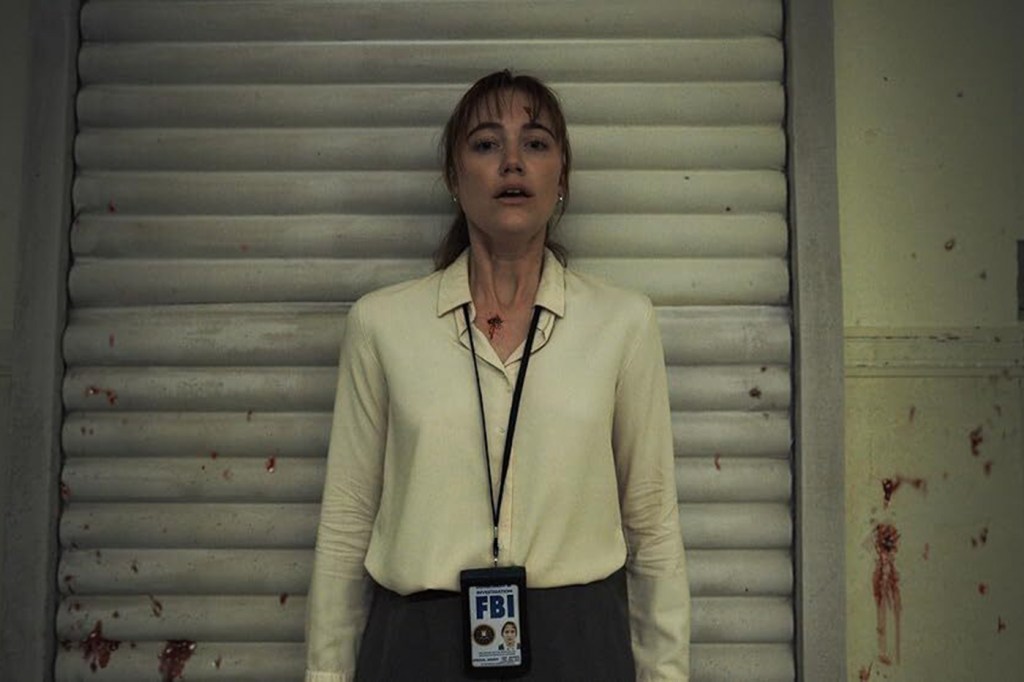Horror movie ‘Longlegs’ has gone viral with its creepy marketing campaign. But is it more than just a stunt?
Neon has taken a small-budget horror movie and turned it into an event. A Northeastern marketing expert says it’s a lesson in the power of promotion that goes beyond a stunt and becomes a story.

If you were reading the Seattle Times recently, you might have noticed something strange: an entire half page occupied by a mysterious, Zodiac Killer-like code. Even stranger? The cryptic symbols end with the phrase, “Printed at the request of Longlegs.”
Don’t worry, there’s not a serial killer on the loose. Instead, the coded message was part of the creative, creepy marketing behind the upcoming horror movie/serial killer thriller “Longlegs.”
Beyond the Seattle Times stunt, Neon, the independent production company behind the movie, plastered billboards in Los Angeles with a phone number that leads to whispered threats from Nicolas Cage, who plays the titular occult serial killer. There is the true crime-like website dedicated to telling the story of Longlegs’ victims, all part of the so-called Birthday Murders. Then there are the cryptic trailers that leave audiences in the dark about exactly what the movie is about –– and leave Cage’s performance and appearance out of the picture.
It’s certainly creative, but is Neon’s big bet on “Longlegs” more than just a stunt?
Featured Posts
When asked about the film’s promotional strategy, Sean Gallagher, who teaches marketing at Northeastern University, has one word: brilliant.
“Do creative and viral marketing strategies like the one we’re seeing here with ‘Longlegs’ work? Yes, if they are created to viscerally grab the viewer,” Gallagher says. “This one is –– this grabs you.”
Now that reviews for the movie have hit, audiences have a sense of what they can expect from “Longlegs” and its story of an FBI agent (Maika Monroe) investigating a series of occult family murders. But even now, director Osgood Perkins seems to be hinting that there is more to the movie than just another take on “Silence of the Lambs.”
“Longlegs” is the latest movie to learn from the “Blair Witch Project” playbook and use a sense of mystery and intrigue to draw people in. It might seem antithetical in marketing to withhold information from the audience, but Gallagher says it can be an effective way to cut through the noise and stand out from the barrage of advertisements that people are exposed to every day.
Maintaining a sense of mystery creates what Gallagher calls a curiosity gap. “It’s a psychological process,” Gallagher says. “We get a bit of information, and we go, ‘What is that?’ I saw the billboard, and I thought, ‘What the hell is that?’ … It’s a legitimate technique to grab people’s attention, and they do a wonderful job of it here.”
But what pushes Neon’s marketing from a creative stunt to a viral phenomenon is that it’s perfectly in sync with the vibe and draw of the movie itself, he notes. The best marketing campaigns connect with people emotionally –– in this case that means evoking fear and dread outside the movie theater, too.
A recently released video showing how Monroe’s heart rate spiked when she first saw Cage’s transformation as Longlegs on set clearly wants to play into the adrenaline-pumping experience that horror fans enjoy so much.
“Looking at the billboard and the various trailers, it induces a sense of anxiety, anticipation, excitement, fear,” Gallagher says. “What do people who go to horror films want? All of that, that whole experience.”
“I don’t want to suggest that it’s manipulative in a negative sense –– it’s manipulative in a very positive sense,” he adds. “It’s engaging us.”
It’s still unclear whether all of this will translate into a successful opening weekend for “Longlegs.” This kind of strategy won’t work for every movie, Gallagher admits, so don’t expect to see the next “Mission Impossible” movie to come with cryptic notes from Tom Cruise. But for studios like Neon that are willing to take a risk –– and for movies like “Longlegs” where the crazier the promotion is, the better it is –– Gallagher says this campaign is a lesson in how promotion can go beyond a stunt and become a story that takes on a life of its own.
“It’s about creating the experience,” Gallagher says. “They’re creating an experience before the film, during the film and then, if it’s a good film, we leave and we talk about it with other people, we share stories about it. That’s all part of the experience.”











